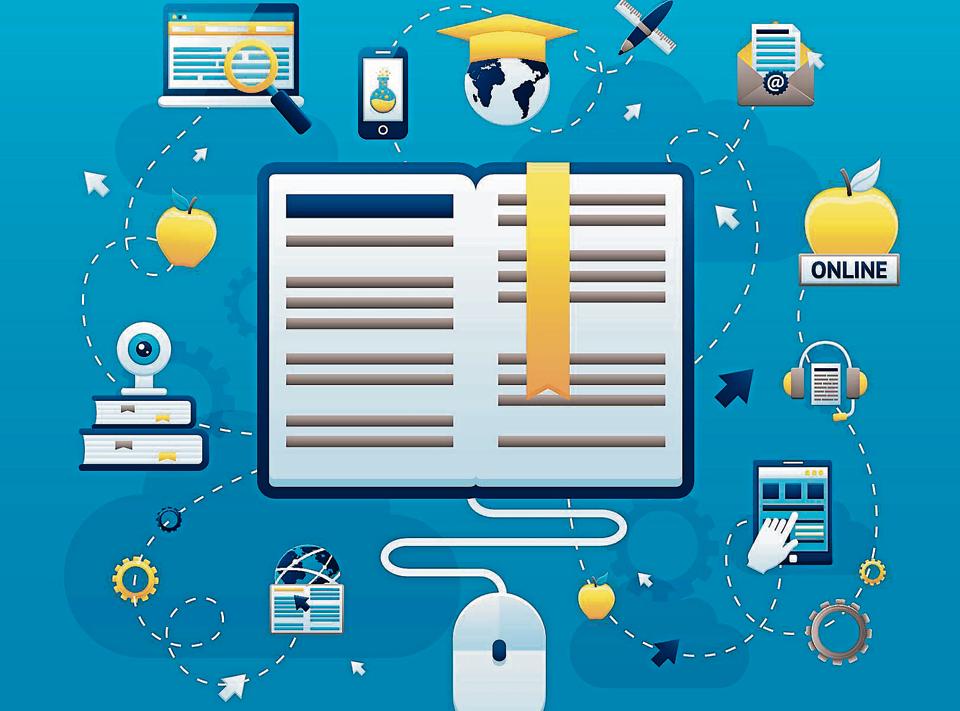
Between Google, Wikipedia and e-books, there are fewer reasons to go to the college library — but that doesn’t mean college libraries are giving up. Many are finding new ways to draw in students.
Some are offering audio-visual material, pooling with other colleges so they can expand their range, creating interactive portals, and handing out leaflets to freshers about the rare plant repositories, manuscripts and ancient times that await.
“Libraries have always played a vital role in the academic development of a student,” says Agnelo Menezes, principal of St Xavier’s College, Fort. “In the present times, students visit libraries much less often than we would in the course of our education. But a student’s affinity to visiting the library depends a lot on the lecturer – whether he or she chooses to refer them to Wikipedia or demands quality references from authors and journals that can further encourage the student to research a topic.”
There’s also the marriage of the two — text and tech.
A digital resource
The Welingkar Institute of Management Development & Research (WeSchool) in Matunga went through a digital transformation in 1997 to ensure efficient delivery of library services, circulation of books and other library material.
Known as the Learning Resource Center (LRC), it now curates a digital shelf of e-books, audio-visual material, online databases, statistical information, etc.
LRC boasts a collection of more than 95,000 books and more than 150 print periodicals (Indian and foreign).
“The library collection has been developed according to syllabus of different academic programmes and industry trends so that students are updated with latest knowledge and industry trends,” says librarian Sandeep Bhavsar. “LRC conducts career workshops for students that include library orientations, sessions on how to prepare for campus interviews, database training, research guides – how to write bibliography, research life cycle, etc. We also have anti-plagiarism software to make sure that each project is authentic.”
Another highlight is InfoWe, an interactive portal within LRC that serves as a one-stop store for research papers, news updates, access to online databases, reviews of study material, etc.
These resources can be accessed on campus as well as off-campus.
There are special zones in the library such as the audio-video center where stduents can screen more than 2,000 films, entertainment and academic, business and documentary; there are also online discussion rooms for students.
“In today’s digital age, we need to convert libraries into futuristic knowledge centres with the ability to add value to the education system,” says Bhavsar.
“The online databases are comprehensive and user-friendly,” says Manasi Mistry, 24, a second-year student at WeSchool. “We primarily visit the library to access case studies, research papers and online databases for various projects and assignments. The library has data on various companies and industries, which help us in preparing for our placement interviews too.”
Evergreen
Freshers at Xavier’s are given leaflets pointing them to treasures like the plant library, called the Blatter Herbarium, which contains more than 2 lakh plants flattened and preserved.
St Xavier’s, Fort, has tried a different tack. Its library is a storehouse of books as much as 150 years old, they have not been digitised, precisely so that students can be drawn to the library to access them.
To help freshers appreciate just how much treasure lies in wait, they are given reading lists that feature journals that aren’t even available online.
In some cases, the treasures are purely physical and could only be fully appreciated offline.
The plant library, called the Blatter Herbarium, for instance, has more than 2 lakh plants flattened and preserved, and is the only herbarium of its kind in India.
Some samples date back to 1816. “Adjacent to the herbarium is a library containing literature on taxonomy, with some works dating from the 16th century,” Menezes says.
Students seem to appreciate the rare treasures, even in a time of clicks and hashtags. “I visit the library quite frequently,” says Meenakshi Ramesh, 20, third-year Economics student. “And the online library catalogue makes it easier to find the right journals or books.”
A book pool
The library at Jai Hind College in Churchgate is entirely digitised and offers online, pre-booking facilities too. The library also holds annual book fairs on various themes — languages, careers etc.
“We have signed Memorandums of Understanding (MoUs) with various city colleges, under which we can share books and journals with them virtually,” says principal Ashok Wadia. “This way, we have a humungous resource for our students to choose from.”
The college also conducts workshops for librarians periodically, so they can interact with their counterparts in other colleges, exchange experiences and stay abreast of the latest developments in the field.
The college also conducts orientations for parents, in which the library features. “Parents can also access and order books from our college’s online catalogue and suggest to the librarian what books could be added. We want to include them because teachers and parents play a big role in encouraging students to utilise a library,” Wadia says.
“An entire floor is dedicated to the library in our college, with resources available for whatever topics we want to research,” says Akhil Jain, 19, a third-year Arts student. “However, I believe, one has to have a research instinct and encouragement from lecturers to be able to utilise the library to its fullest.”
One for all
Ramnarain Ruia College in Matunga has 120,000 books in its library.
“We also have microfilms, audio cassettes, CDs & DVDs, some of them meant specifically for visually challenged students,” says assistant librarian Manali Miling Jadhav.
A rare section comprises books from the 18th century onwards, include rare manuscripts and government records, most in Marathi and Sanskrit.
The e-learning center on the third floor provides free internet access to students for educational websites.
The library has an inter-library loan service and offers training programmes on computer proficiency, library science for non-professional staff and library staff education programme.
[“source=hindustantimes”]





